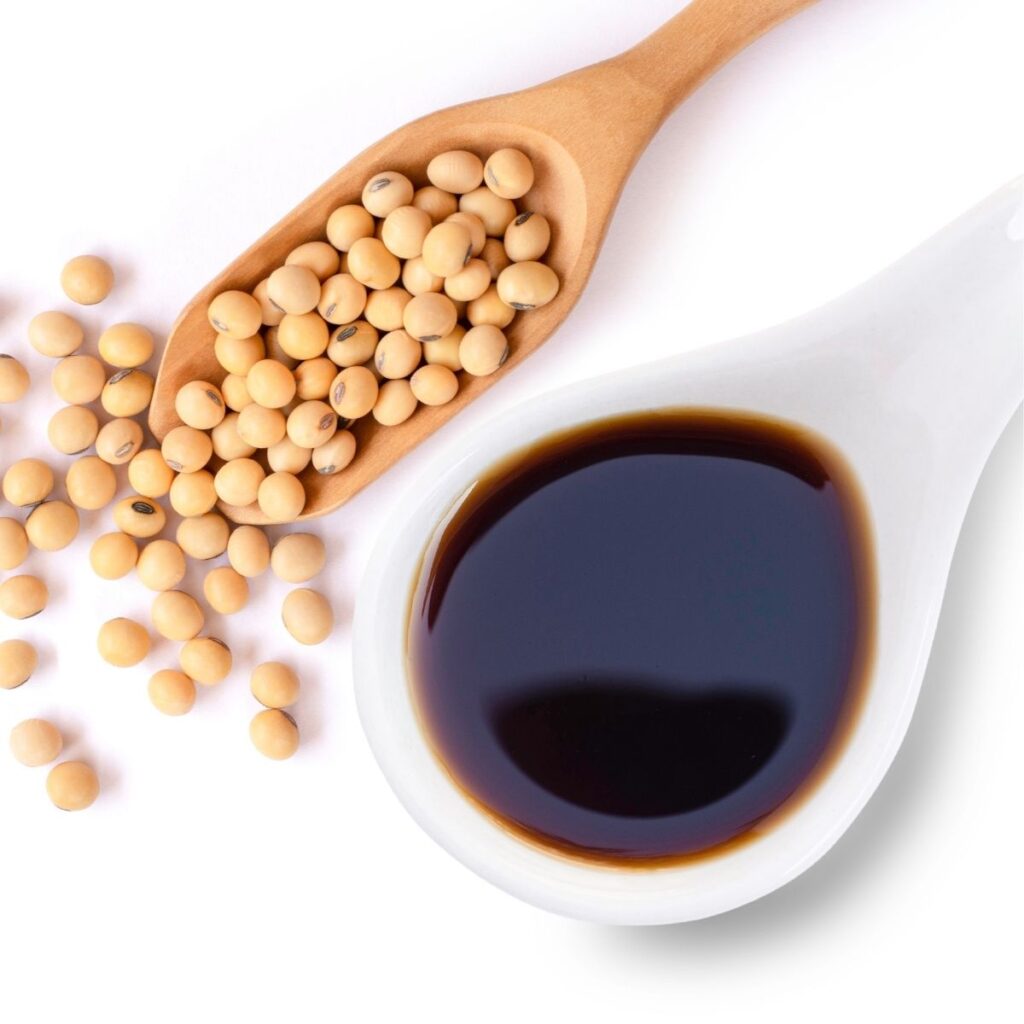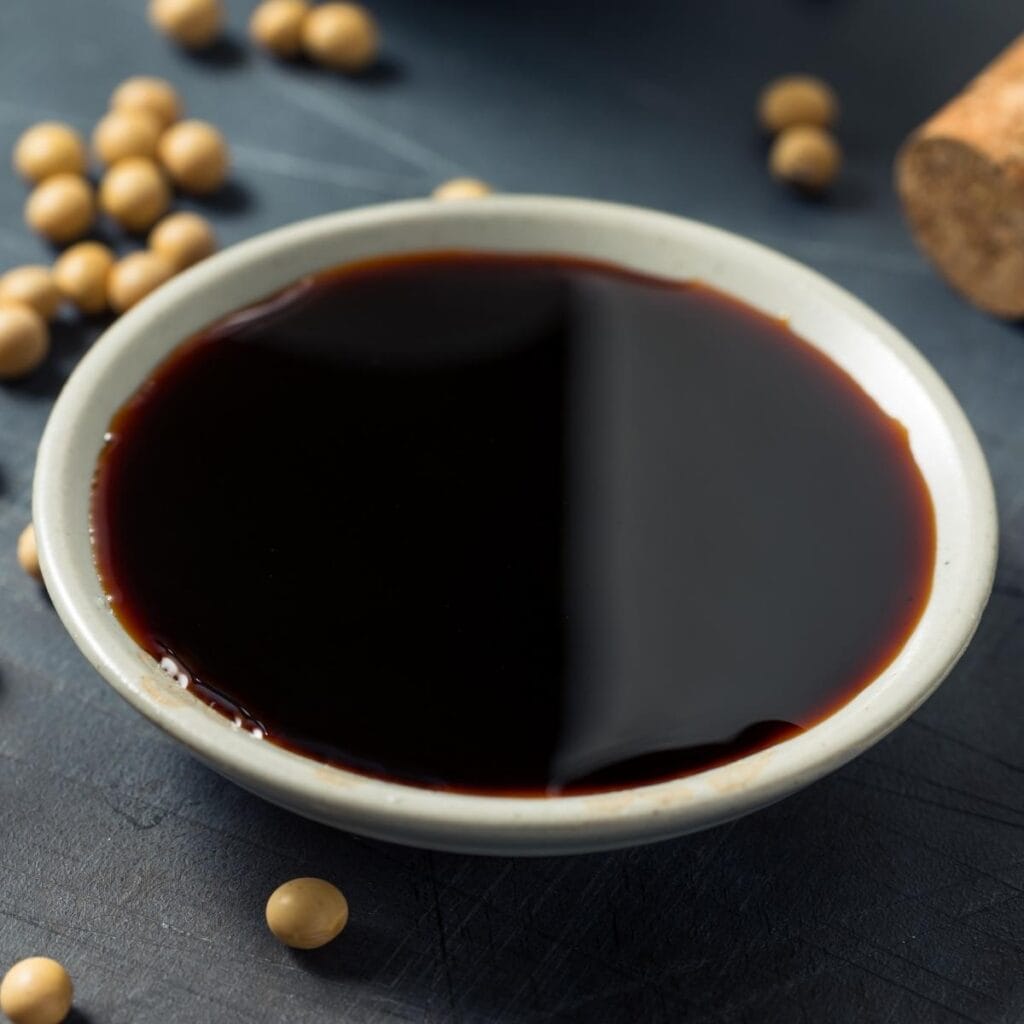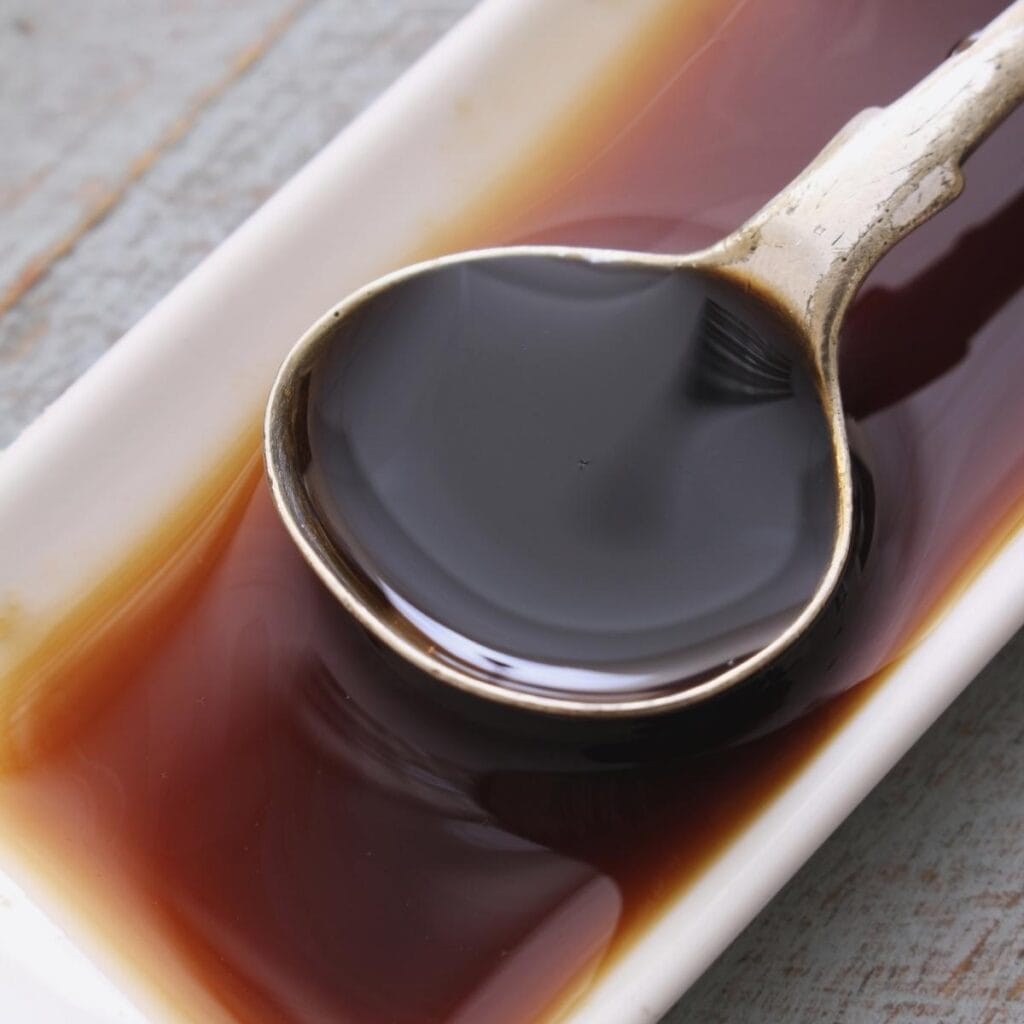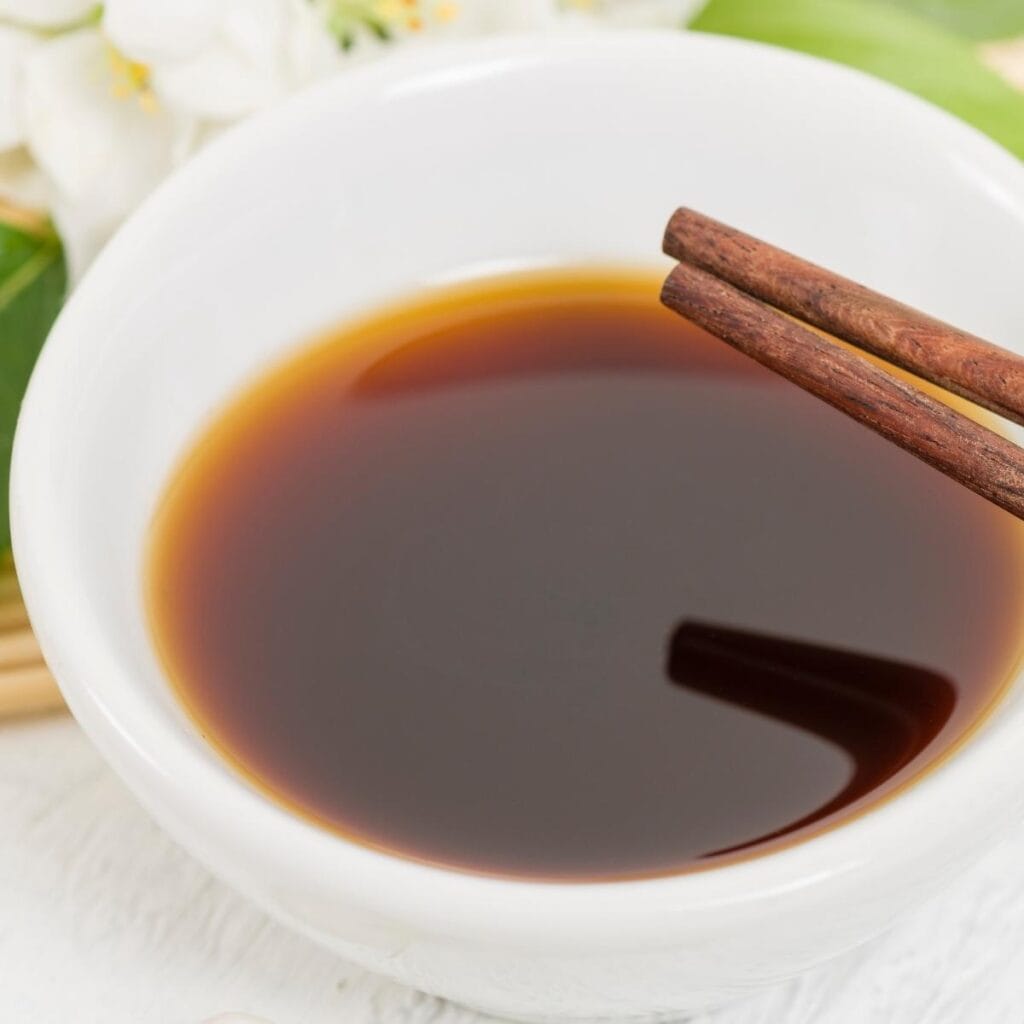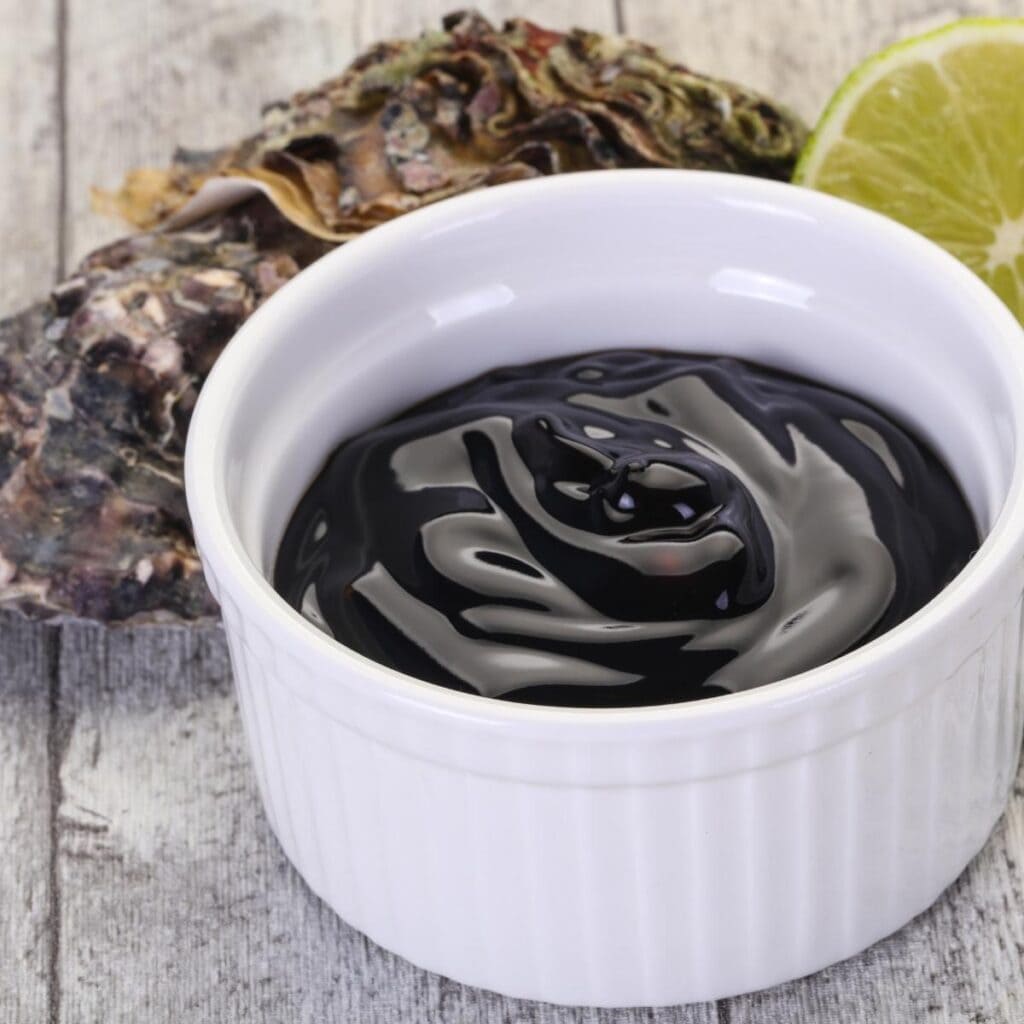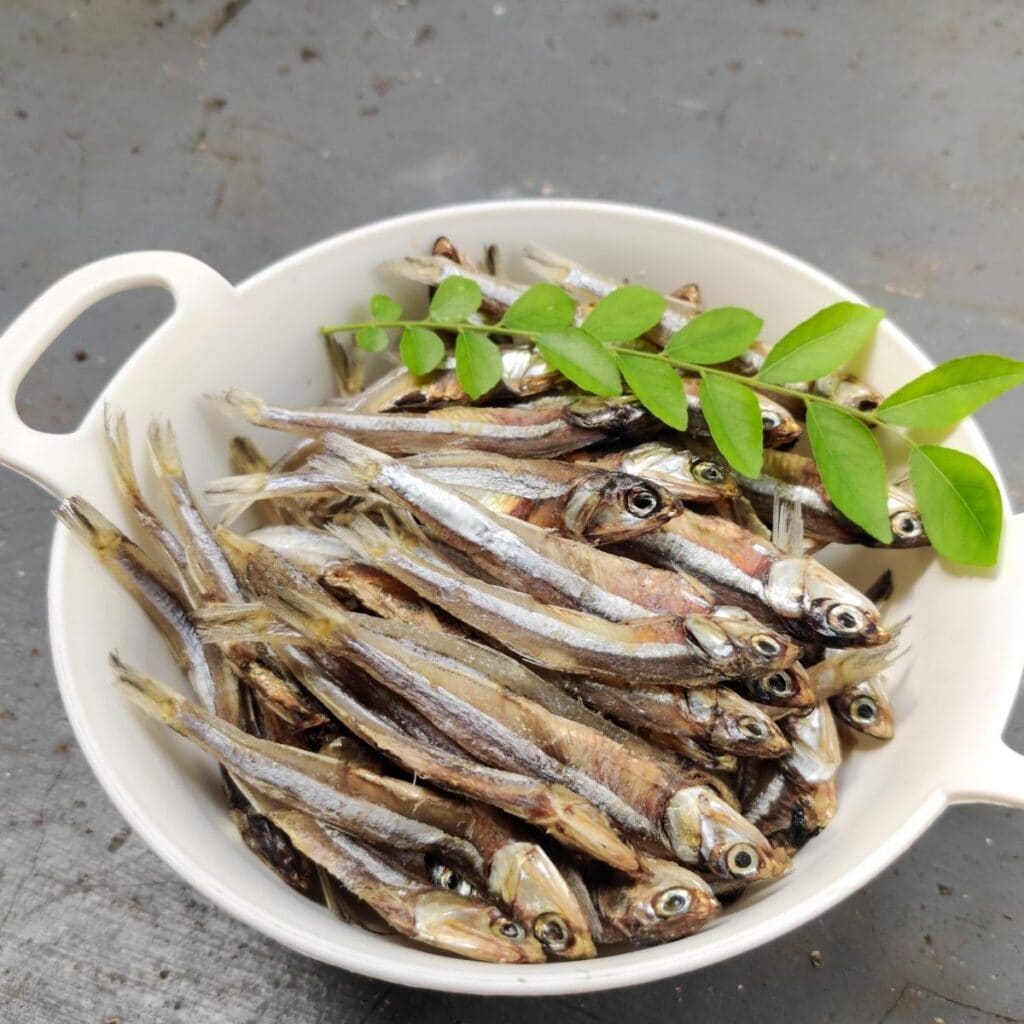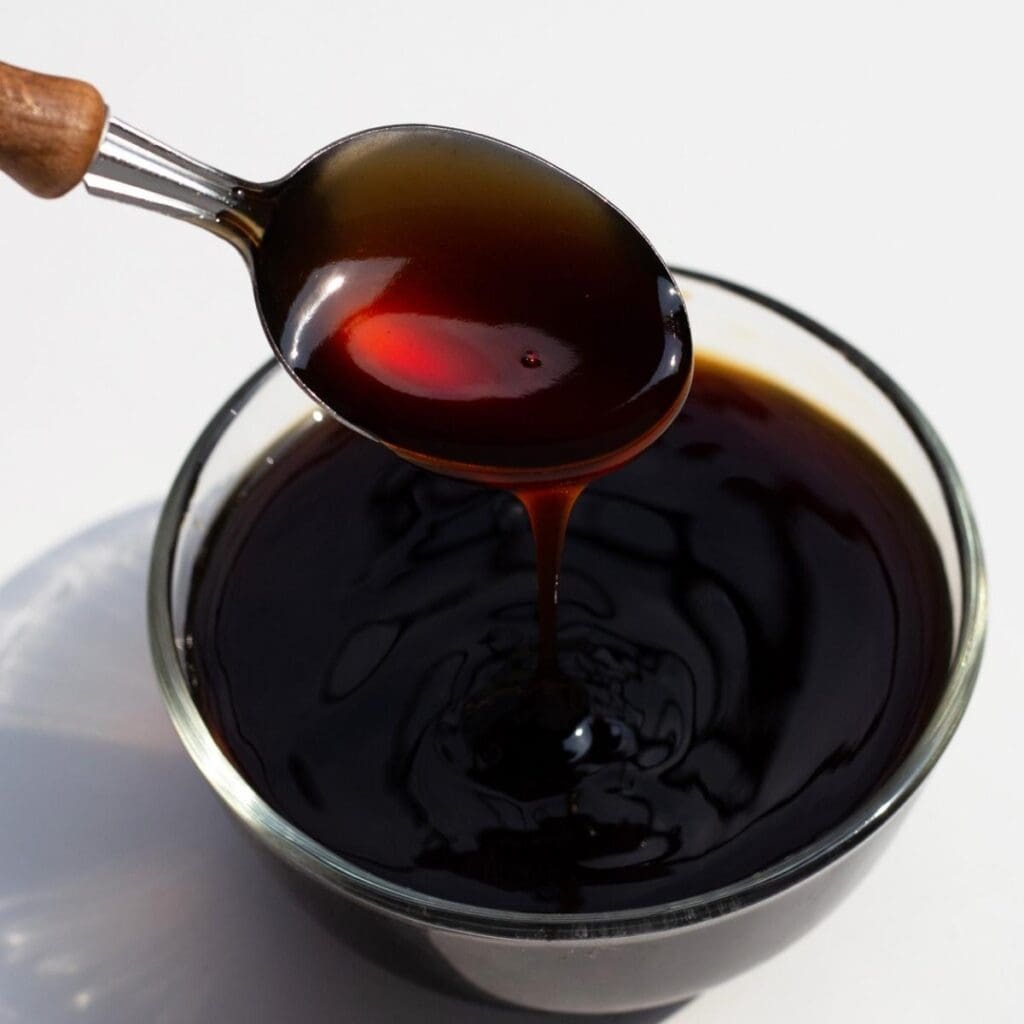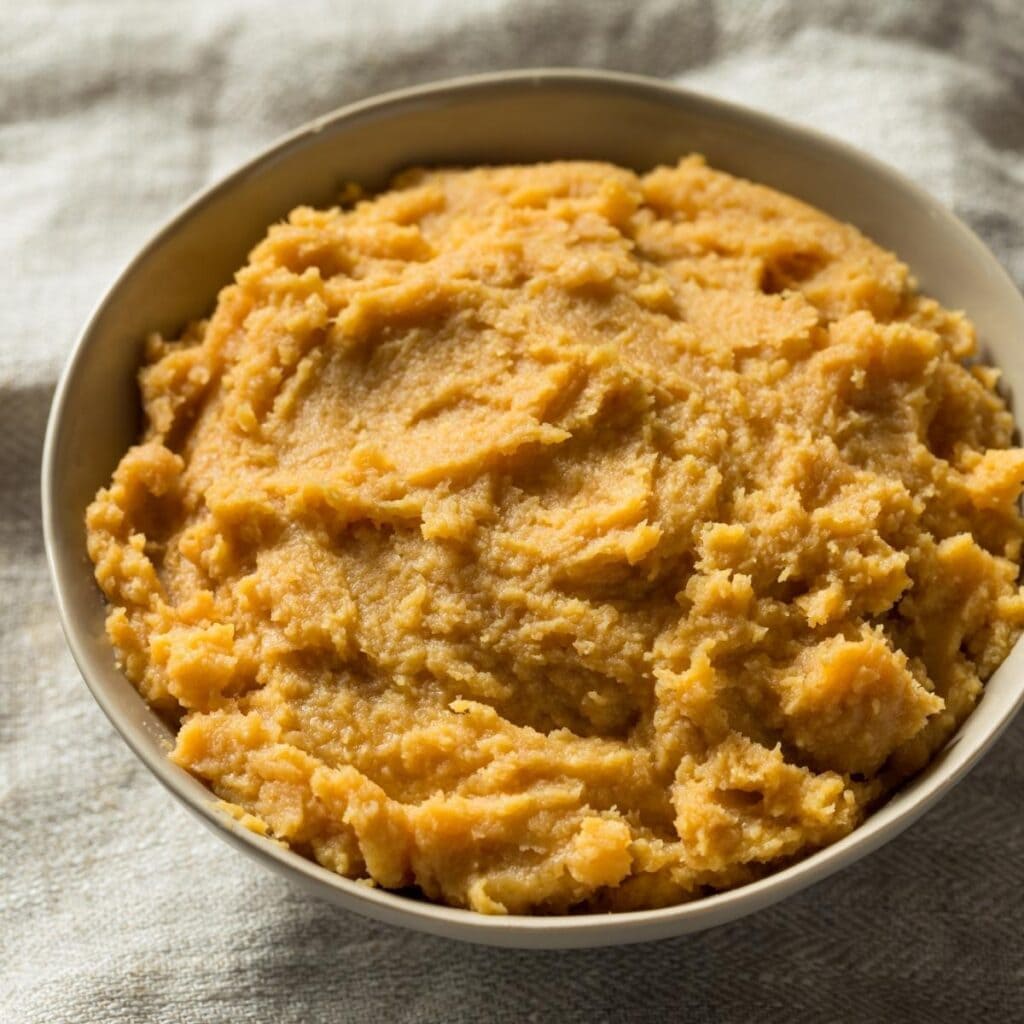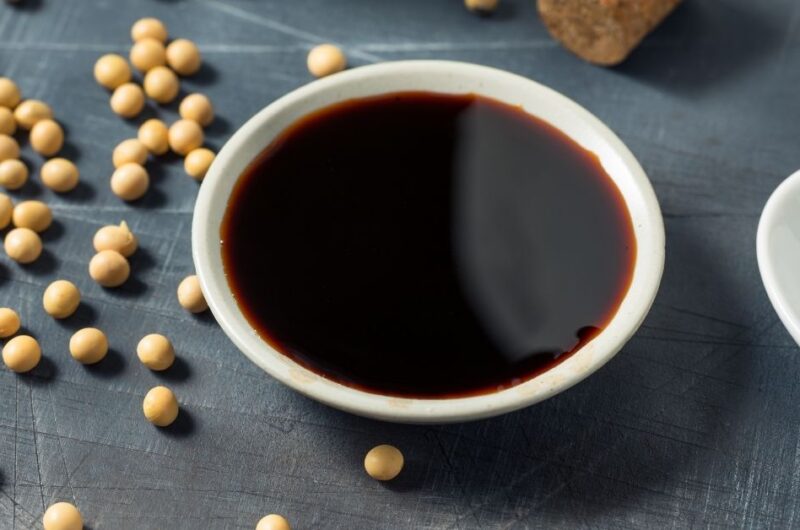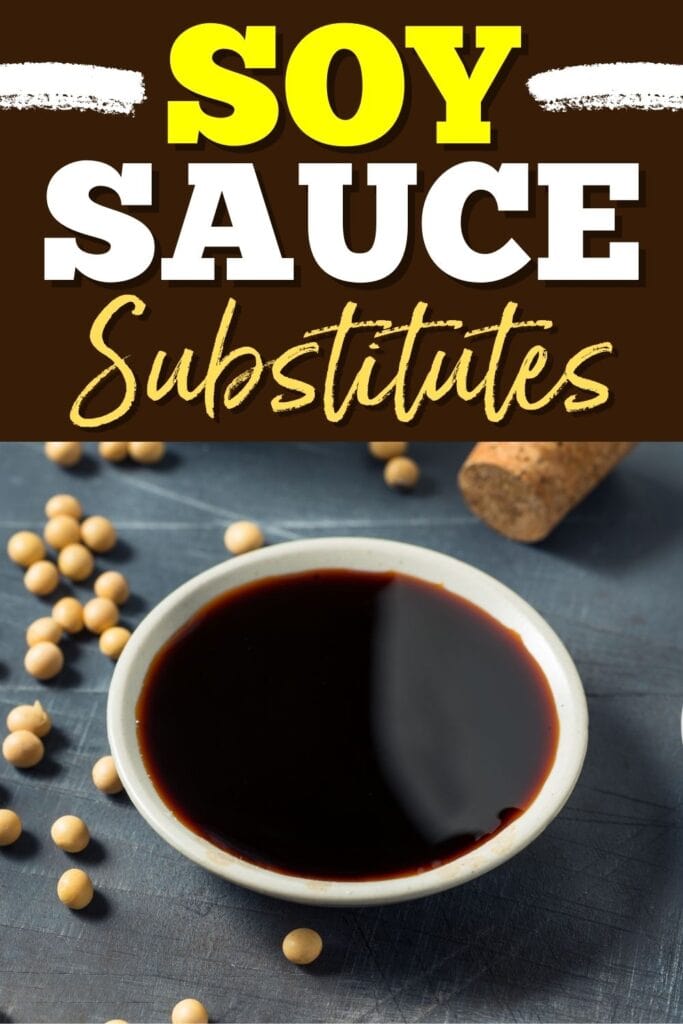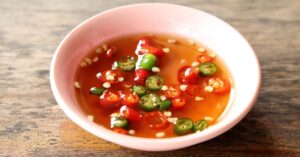Because we all forget things at the store, right? Even when I have a list, I know something will get missed. It happens to the best of us. You’re halfway through making dinner and open the refrigerator or pantry for an ingredient and…uh oh. You don’t have it. You could’ve sworn you replaced that empty bottle of soy sauce last week. But alas, it’s not there. Luckily, this list will help you solve the problem so you can continue cooking! Of course, it might not be that you just forgot to get more. Maybe you or a loved one has an allergy? It contains both soy and wheat, after all. So, if you have any sensitivities to soy sauce, this list will help you find a replacement. From marinades and seasonings to dips, soy sauce is an essential tool in plenty of recipes. So, keep these soy sauce substitutes somewhere safe (try saying that three times fast!), and your dinner will never have to suffer.
What is Soy Sauce?
Soy sauce is a salty-savory brown liquid originally from China. Made with fermented soybeans, grains, and saltwater, it includes a type of mold called kōji. Soy sauce varies depending on where the ingredients come from, so it varies in flavor and texture, including light, dark, sweet, or thick. Because of the fermentation process, soy sauce usually takes quite a while to make.
First, the soybeans are soaked and cooked. Then, the grains are roasted, crushed, and mixed with the soybean paste.Next, the kōji is added, and the whole mixture is combined with salt water.Finally, this mixture is left to brew before being pressed and pasteurized.
10 Easy Substitutes for Soy Sauce
1. Tamari
Tamari is a Japanese sauce also known as shoyu. It’s a fermented soy product made with similar or comparable ingredients to soy sauce. The process of making tamari is also very similar. However, tamari is made without wheat, making it gluten-free and giving it more of an umami flavor. If you’re using tamari due to gluten sensitivity, make sure you check that it hasn’t been processed in facilities that process wheat. Substitution ratio – 1:1 – since tamari is so similar, you can use the same amount that your recipe already calls for.
2. Worcestershire Sauce
Worcestershire (pronounced “wus-ter” or “wus-ter-sha”) is a sauce made from anchovies, salt, sugar, vinegar, and spices. Like soy sauce and tamari, it is also fermented. This sauce comes from England, so it has a noticeable difference in flavor. It’s much more tangy than umami and not as salty. Keep this in mind when substituting for soy sauce; you may need to add extra salt to the dish. There are a few cons to substituting with Worcestershire sauce. One is that it has more sugar than some other sauces. Another is that it is not a good substitute if you are vegan. Since Worcestershire sauce contains anchovies, it is not free of animal products. Substitution ratio – 1:1 – If you like tartness, use an amount equal to what the recipe calls for. If you don’t like tartness, use less Worcestershire. Of course, you can always add salt if needed.
3. Fish Sauce
Another sauce with a deep umami flavor is fish sauce. Fish sauce is popular in Asian dishes for all kinds of sauces and soups, and it’s made from fermented fish aminos. This makes the flavor super salty and fishy. Of course, that fishy smell is almost gone when it’s in the dish. If you’re looking for gluten-free options, be cautious. Some fish sauces may contain gluten, depending on where they’re processed. Substitution ratio – 1:1 – If you don’t like the fishy flavor, you can add a little less and add salt as needed.
4. Salt
Salt is easily the most readily available soy sauce substitute. It’s also the least expensive, making it an outstanding option in my book. Salt is excellent for those moments when we’re halfway through a recipe, open the fridge, and think, “oh ya… we’re out of soy sauce.” There are a couple of downsides to using salt instead of soy sauce. First, you’ll definitely lose the umami flavor that you get with soy sauce. You might want to try only using salt substitutes in recipes that don’t rely on the soy sauce flavor. Salt is also super high in sodium. So, make sure you taste your food when possible to avoid over-salting. Substitution ratio – ¼ tsp salt : 1 tsp soy sauce. Remember, every recipe is different. If you have other salty ingredients, you might need more or less added salt. Always taste!
5. Coconut Aminos
Coconut aminos is another terrific option for substituting soy sauce. It’s not made from the coconut’s fruit but from the coconut plant’s sap. The coconut plant sap is fermented, giving it a salty flavor. The result is a dark brown, sweet, and salty sauce that’s ideal in sauces and dinner recipes. Coconut aminos is ideal for people with dietary restrictions because it’s gluten-free and vegan. It’s also lower in sodium, wheat-free, and soy-free. Substitution ratio – 1:1 – Coconut aminos is pretty similar to soy sauce, so an equal exchange will work.
6. Oyster Sauce
Oyster sauce is another popular sauce used in many Asian dishes. It has less sodium than soy sauce but still adds a similar flavor. Made by adding a thickening agent to a blend of salt, sugar, and oyster extract, its consistency is more syrupy than soy sauce. But it still has those umami flavors we all love. Because of the thickening agent, watch out for gluten or soy if you have any food sensitivities. Substitution ratio – 1:1 – You can substitute with an even ratio, but the flavor will be slightly different.
7. Liquid Aminos
Liquid aminos is pretty similar to soy sauce. However, it’s made with unfermented soybeans. This means the flavor itself is comparable, but it’s sweeter and milder than soy sauce. Liquid aminos also contains more sodium and is, therefore, saltier than soy sauce. Although not soy-free, liquid aminos is acceptable for all other food sensitivities. In addition, it’s vegan, gluten-free, and alcohol-free. Substitution ratio – 1:1 – Liquid aminos is often labeled as a soy sauce substitute right on the bottle. They’re that similar!
8. Anchovies
Anchovies may be a little odd or intimidating to some, but they add fantastic flavor to any sauce. Putting these little fish into your food may have you cringing, but they virtually disappear and add delicious flavor in return. The fish are cured in salt, so they have a salty, umami flavor that makes them a great substitute for soy sauce. Anchovies in a jar usually last about six months, so you can use them as you need and not have to worry about running out in a rush. Something to note: anchovies are best used in sauces, dressing, or soups. They melt right into hot liquids but will stay whole in other dishes like stir-fry. Of course, you can also chop anchovies very small and use them as salty flavor in certain recipes. Substitution ratio – Use one to two anchovies per tablespoon of soy sauce.
9. Hoisin Sauce
Hoisin sauce is usually another excellent soy sauce substitute. However, it is more of a glaze than a sauce. It has a lot of flavor and is a fantastic option for cooking meats. It can also be used as a dipping sauce. If this sauce is too thick for your recipe, thin it out by adding a little bit of water. Substitution ratio – 1:1 – If you add water to the Hoisin sauce, do so before measuring.
10. Miso Paste
Miso paste is a very popular substitute ingredient. Like soy sauce and some of the other substitutes on this list, it’s made with fermented soybeans. The main difference is that this is a paste rather than a sauce. I find it’s best used in soups or sauces as it melts into whatever you’re cooking. It’s even incredible in caramel! However, it doesn’t lend itself as well to meats or dips. Substitution ratio – 1:1 – If you need to thin out the paste, add water and store it in the fridge.
More Substitutes To Keep On Hand
Buttermilk SubstitutesChipotle Powder SubstitutesMirin SubstitutesOyster Sauce SubstitutesHoisin Sauce Substitutes Click on a star to rate it!
Average rating 5 / 5. Vote count: 2 No votes so far! Be the first to rate this post.
Share on social media: Let us improve this post!



